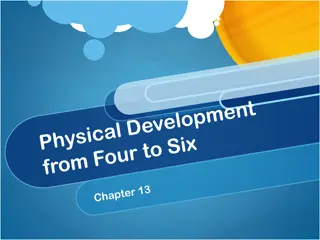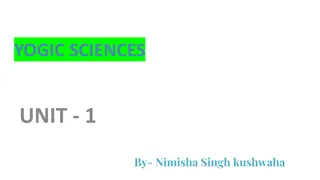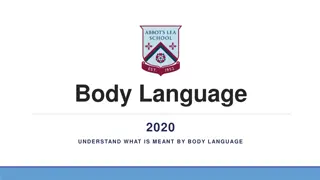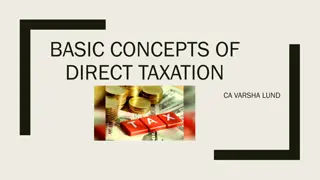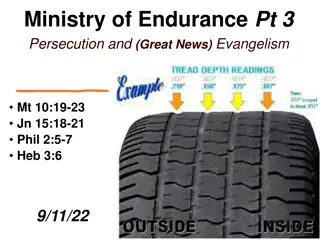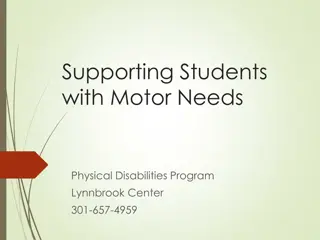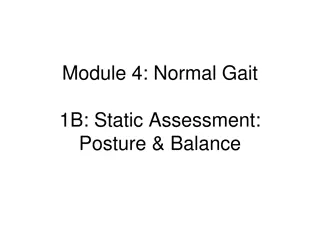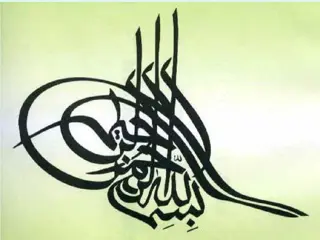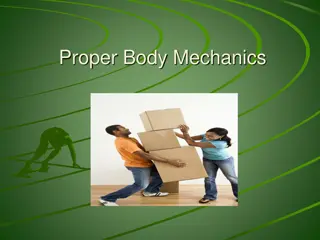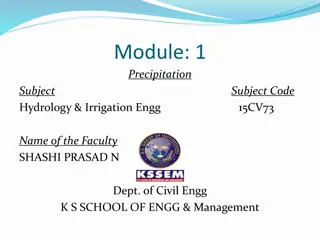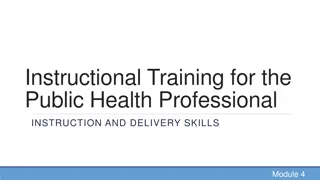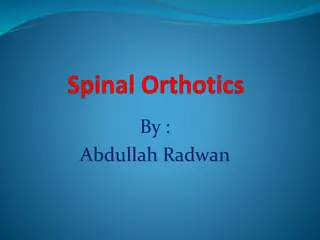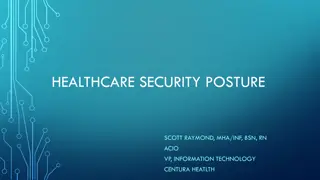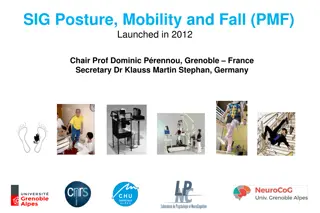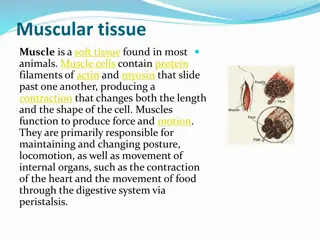Understanding Posture: Importance and Types Explained
Learn about posture, the attitude of the body at rest or in motion, and its significance in maintaining stability and muscular health. Explore the two main types of posture - Inactive and Active, each serving unique purposes in supporting bodily functions. Dive into the details of Static and Dynamic postures, their roles in movement and stability. Discover the postural mechanism involving muscle work and neural control for maintaining optimal body alignment. Gain insights into the importance of proper posture for overall health and well-being.
Download Presentation

Please find below an Image/Link to download the presentation.
The content on the website is provided AS IS for your information and personal use only. It may not be sold, licensed, or shared on other websites without obtaining consent from the author. Download presentation by click this link. If you encounter any issues during the download, it is possible that the publisher has removed the file from their server.
E N D
Presentation Transcript
POSTURE DR. DIGVIJAY SHARMA DEPARTMENT OF PHYSIOTHERAPY U.I.H.S KANPUR
Definition It is the attitude assumed by body either with support during muscular inactivity or by means of the co-ordinated action of many muscles working to maintain stability. They are of two types of posture 1. Inactive posture 2. Active posture
Inactive Posture These are attitude adopted for resting or sleeping. They are most suitable for the purpose when all essential muscular activity which are required to maintain life is reduced to a minimum. The function of respiration and circulation are preferred to maintain the function of all the body parts
Active Posture- The integrated action of many muscles are required to maintain active posture. It is of two types 1. Static posture 2. Dynamic Posture
1. Static Posture - A constant pattern of posture is maintained by the inter - action of group of muscles , which work more or less statically to stabilize the joint and in opposition to gravity or other forces. In the erect postures they preserve a state of equilibrium. The body and its segments are aligned and maintain in certain position.
Dynamic Posture - This type of active posture is required to form an efficient basis for movement. The pattern of posture is constantly modified and adjusted to meet the changing circumstances , which arises as the result of movement.
The postural mechanism or postural control - Muscles The intensity and distribution of muscle work, which is required for both static and dynamic posture varies considerably with the pattern of posture. The groups of muscles most frequently employed are those which are used to maintain erect position of body, by working to counteract the effects of gravity. They are consequently known as antigravity muscles and their action with regards to joints are usually that of extensors (they are mainly involved for erect posture). Gravity motivates for flexion, so to counteract there must be an extensor so if antagonistic muscles are acting actively the agonist action will be cancelled.
Nervous Control- postures are maintained or adopted as a result of neuromuscular co- ordination. The appropriate muscles being innervated by means of a very complex reflex mechanism.
The Postural Reflexes A reflex is , by definition , an efferent response to an afferent stimulus. The efferent response in this instance is a motor one , the anti-gravity muscles being the principal effector organs. After afferent stimuli arises from a variety of sources all over the body. The most important receptor, being situated in the body are eye, ear and the muscles itself. a. Muscles b. Eye c. Ear d. Joint
The muscles Neuromuscular and neurotendinous spindles within the muscles record changing tension. Increased tension causes stimulation and results in a reflex contraction of the muscle, and so appear to be manifestation of the myotatic, or stretch, reflex. The eyes Visual sensation records any alteration in the position of the body with regard to its surrounding, and the eyes from one of the receptors for the righting reflexes which enable the head and body to restore themselves to the erect position from other less usual attitude. The ears Stimulation of the receptors of the vestibular nerve results from the movement of fluid contained in the semi-circular canals of the internal ear. Each canal lies in a different plane, which is at right angle to both the other , and any movement of the head disturbs the fluid they contain, and thus knowledge of the movement and the direction in which it takes place are recorded
Joint structure In the weight bearing position approximation of bones stimulates receptors in the joint structure and elicits reflex reactions to maintain the position.
Pattern Of Posture- They are build up by integration of many reflexes known as postural reflex. There are 2 pattern of postures 1. good postures 2. poor postures
GOOD POSTURE - The posture is said to be good when it fulfils the purpose for which it is used with maximum efficiency and minimum effort. DEVELOPMENT OF GOOD POSTURE- Efficient posture develops quite naturally provided the essential mechanism for it s maintenance and adjustment are intact and healthy. The chief factor which predispose to health and development of muscle and postural reflex are i. a stable psychological background, ii. good hygiene condition, iii. opportunity for plenty of natural free movement.
Poor posture Posture is poor when it is inefficient, that is when it fails to serve, the purpose for which was designed, or if an unnecessary amount of muscular effort is used to maintain it. The predisposing factors or reasons for poor postures are i. unstable psychological background, ii. unhygienic conditions, iii. lack of free moment.
Factors that act to maintain posture/ kinetics and kinematics of postures- 1. External and Internal forces External forces are inertia, gravity and ground reaction forces to maintain the posture, the sum of all the external forces acting on the body must be zero regardless the type and pattern of posture. The internal forces are created by muscles ligament capsule etc. The sum of all internal forces must be zero to maintain posture regardless of the type and pattern so sum of external oblique internal forces must be zero. 2. Inertial forces That may result from this swaying motion usually are not considered in the analysis of forces for static postures . However, inertial forces must be considered in postural analysis of all dynamic postures such as walking , running , jogging .
3. Ground reaction force This is the force due to result of interaction with ground . It is composed of three components - a. vertical b. medial - lateral horizontal c. Anterior posterior horizontal The resultant of all three forces are ground reaction forces vector (GRFV). This GRFV is equal in magnitude but opposite in direction to the gravitational forces . The point of application of GRFV is at the centre of pressure (COG/COP). The LOG and GRFV have coincident forms action lines in static erect posture.
4. Coincident action Line The coincident action lines formed by the GRFV and the LOG serve as reference for the analysis for effects of these forces on the body segments. When the LOG and GRFV coincides as they do in static posture, we can assess the effects at each joint using one or the other. 5. Sagittal Plane The effect of different forces on body segments in the sagittal plane is determined by the location of the LOG. When LOG passes directly through a joint axis , no gravitational torque is created around the joint . However , if the LOG passes at a distance from joint axis , a gravitational torque is created. The gravitation moment tends to move the proximal segment anteriorly when the LOG passes anterior to the joint axis . The gravitational moment tends to move the proximal segment posteriorly when the LOG is located posterior to the joint axis.
Optimal posture - Optimal posture is also called as ideal posture. The ideal posture is one in which body segments are aligned vertically and LOG passes through all joint axis. Ideal posture is impossible to achieve but it is possible to attain same posture that is close to the ideal but possible to a near normal. In normal optimal posture LOG falls close to the joint axis. The optimal posture varies person to person.
Analysis of posture - It is done with reference to the LOG. Sagittal plane analysis 1. Ankle In the optimal erect posture the ankle joint is in neutral position , or midway between dorsiflexion and plantar flexion. The LOG falls slightly anterior to the lateral malleolus and therefore , anterior to the ankle joint axis The anterior position of the LOG relative to ankle joint axis creates a dorsiflexion moment. Soleus muscle acting in reverse action exerts a posterior pull on the tibia and in this way is able to oppose dorsiflexion movements.
2. Knee Knee joint is in full extension and LOG passes anterior to the midline of knee and posterior to patella. This places the LOG just anterior to knee joint axis . Knee joint axis creates an extension Movements. Passive tension in posterior joint capsule and associated ligaments is sufficient to balance the gravitational moment and prevent knee hyperextension. 3. Hip and pelvis In optimal posture, hip is in neutral position and pelvis is level with no anterior or posterior tilt according to Kendall and MC crazy. When in hip joint LOG passes slightly posteriorly to axis. Movement is created in pelvis so extension movement occurs in hip joint but hip extension is required to maintain the posture so there is nothing required to maintain the posture.
Lambo cycle and sacroiliac joint Optimal lumbosacral angle is about 30 degree . In the ideal posture LOG passes through the body of 5th lumbar vertebra and closed to axis of rotation of lumbosacral joint . Gravity, therefore, creates a very slight extension moment at L5 - S1 that is opposed by the anterior longitudinal ligament. When sacrum is in optimal position the LOG passes slightly anterior to sacroiliac joint. Tension in the sacrospinous and Sacrotuberous ligaments counterbalances by gravitational torque and prevents the inferior portion of sacrum from moving posteriorly. The superior portion of sacrum is kept from being thrust anteriorly by sacroiliac ligaments.
Vertebral column In optimal alignment, the LOG will pass through midline of trunk . Stress in lumbar and cervical regions would be comparatively less because the LOG falls close to or through joint axis of these regions. According to KENDALL , the LOG passes through the bodies of the lumbar and cervical vertebrae and anterior to the thoracic vertebrae in the optimal posture .
Head LOG passes through external auditory meatus , posterior to the coronal suture and through the odontoid process . Therefore the LOG falls slightly anterior to the transverse (coronal) axis of rotation for flexion and extension of head and creates a flexion moment. The gravitational moment, which tends to tilt the head forward is counteracted by tension in ligamentous nuchae, tectorial membrane, posterior aspect of zygapophyseal joint capsule, and posterior fibres of annulus pulposus, and by activity of the capital extensors.
Deviation from optimal alignment (in sagittal plane) FLEXED KNEE POSTURE NOTE (If knee is flexed 30 degree , the quadriceps having its maximum force i.e. 51% to maintain the posture when it is more than 30 degree , the quadriceps will be unable to control this posture and the person may fall.) LOG falls anterior to hip joint and posterior to knee joints anterior to ankle joint so hip flexion , knee flexion and dorsi-flexion occurs. EXTENSIVE ANTERIOR PELVIC TILT- The anterior pelvic tilt is when the LOG is passing anterior to the hip joint , the excessive anterior pelvic tilt results in an increase in lumber anterior convexity and anterior cervical convexity.
Optimal alignment with Anterior Posterior Analysis- The of gravity bisects the body in two equal halves.
Deviation from Optimal alignment in Anterior Posterior view - KNEE- The main problem that occurs Knock knee or Jenu-Valgum. The angle between the femur and tibia will increase medially and decrease laterally. The stress will increase to the lateral side and stretching of medial side.
FOOT AND TOE In pes planus or flat foot , there is displacement of talus anteriorly , medially and inferiorly , depression and pronation of calcanium and depression of navicular . This condition disturbs the feissline . Feiss LINE This line is fond in normal foot . This is a line starting from medial malleolus through the tuberosity of navicular ends at a heads of 1st metatarsals . This is a straight line. In conditions like FEISS PLANUS , the whole navicular may be below the feiss line.
PES CAVUS In pes cavus , the medial longitudinal arch of foot will be high. This condition may be rigid or flexible but more stable than PES PLANUS. In walking the foot is unable to adopt to the supporting surface . In this condition stability will decrease .





